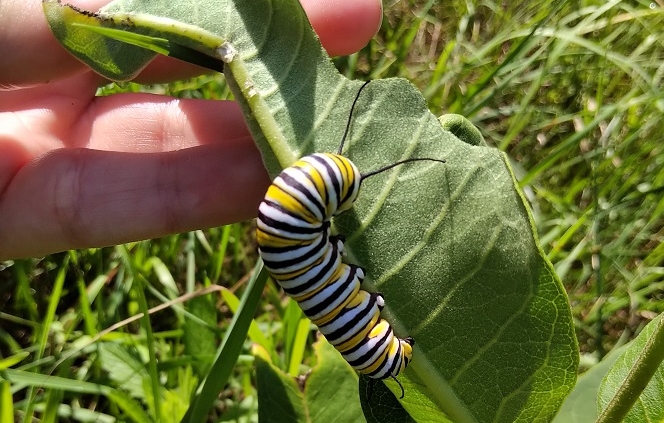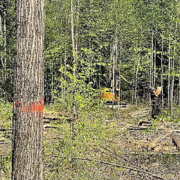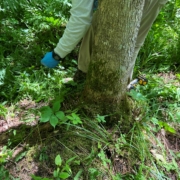Mission Monarch 2020
Last weekend Programs Director Alison joined with Sullivan County Conservation Districts Education and Outreach Specialist Dawn for our second annual Mission Monarch. Mission Monarch is a week long, North America Wide monarch monitoring blitz! On Saturday morning we gathered at Up on the Hill Conservation Area in Charlestown, NH where our new citizen scientists took a crash course in all things monarch.
Then we headed into the field to count common milk weed plants and inspect each one for monarch eggs and caterpillars. During our forty five minutes of searching we checked 146 common milkweed plant (and that wasn’t even all of them!) On those plants we found 10 caterpillars and 13 eggs! We also saw 3 adult monarchs flying around.
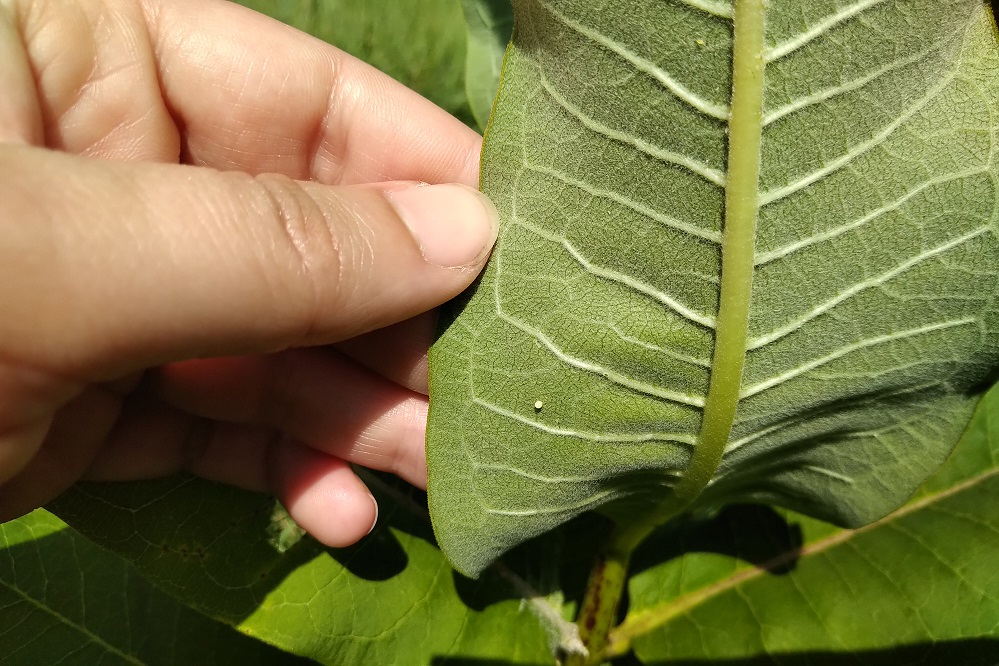
Monarch Egg attached to the bottom of a milkweed leaf. Notice the off-white color of the egg. This is one way to tell the difference between the eggs and milkweed sap, which is pure white.
The Mission Monarch blitz runs until August 2nd. If you want to collect data for Mission Monarch in your own area, visit their site and follow the 4 simple steps. You can continue to collect data throughout the summer and fall, not just this week.
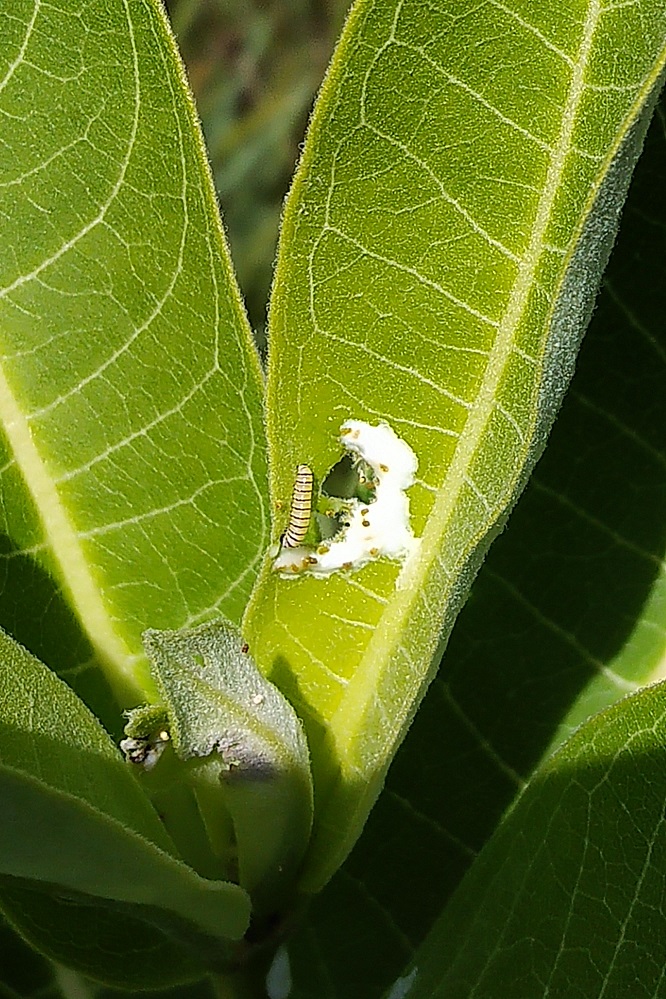
First Instar caterpillar fresh from its egg. A caterpillars first meal is often the egg that recently covered it.

Citizen Scientists monitoring milkweed plants for Monarch eggs and caterpillars at Up on the Hill Conservation Area

